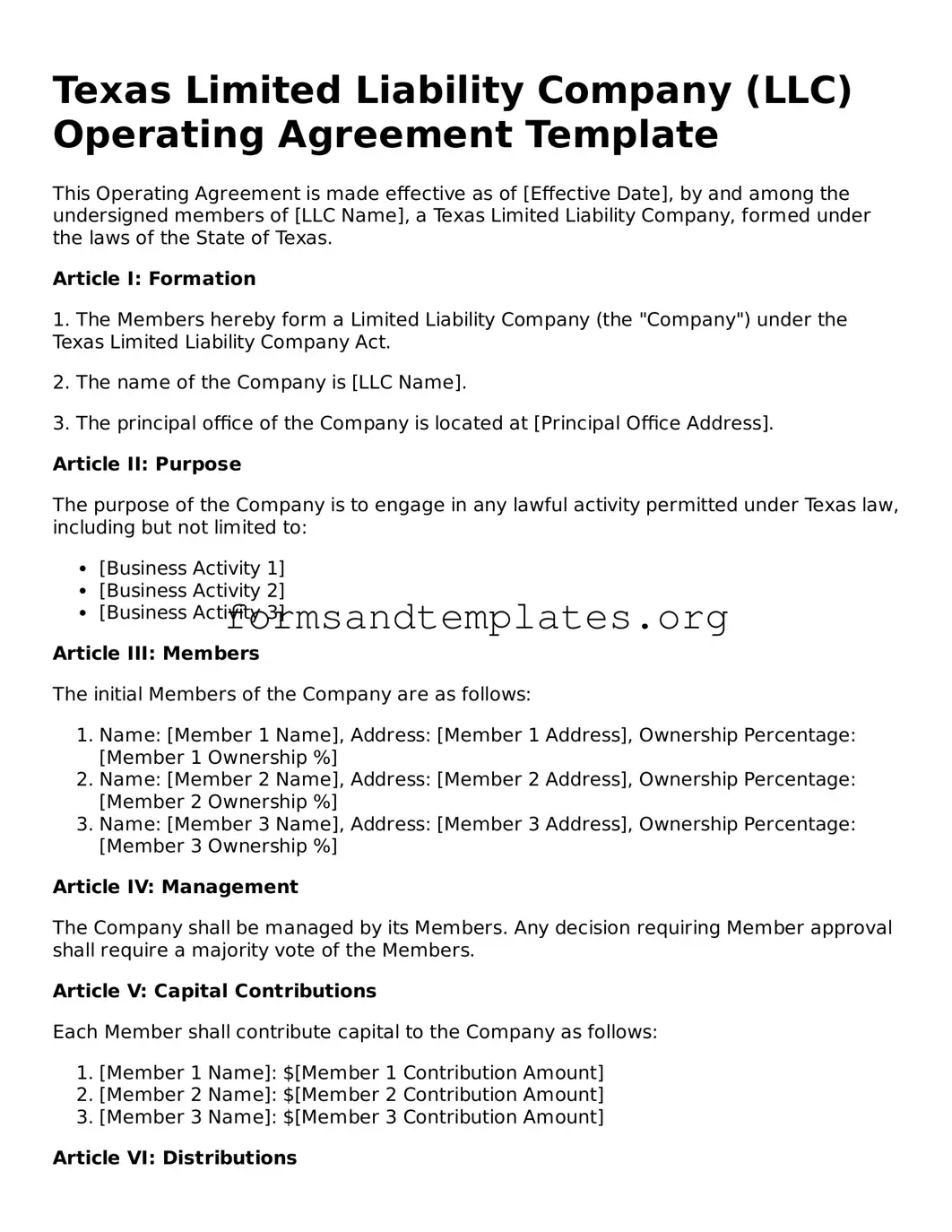Texas Limited Liability Company (LLC) Operating Agreement Template
This Operating Agreement is made effective as of [Effective Date], by and among the undersigned members of [LLC Name], a Texas Limited Liability Company, formed under the laws of the State of Texas.
Article I: Formation
1. The Members hereby form a Limited Liability Company (the "Company") under the Texas Limited Liability Company Act.
2. The name of the Company is [LLC Name].
3. The principal office of the Company is located at [Principal Office Address].
Article II: Purpose
The purpose of the Company is to engage in any lawful activity permitted under Texas law, including but not limited to:
- [Business Activity 1]
- [Business Activity 2]
- [Business Activity 3]
Article III: Members
The initial Members of the Company are as follows:
- Name: [Member 1 Name], Address: [Member 1 Address], Ownership Percentage: [Member 1 Ownership %]
- Name: [Member 2 Name], Address: [Member 2 Address], Ownership Percentage: [Member 2 Ownership %]
- Name: [Member 3 Name], Address: [Member 3 Address], Ownership Percentage: [Member 3 Ownership %]
Article IV: Management
The Company shall be managed by its Members. Any decision requiring Member approval shall require a majority vote of the Members.
Article V: Capital Contributions
Each Member shall contribute capital to the Company as follows:
- [Member 1 Name]: $[Member 1 Contribution Amount]
- [Member 2 Name]: $[Member 2 Contribution Amount]
- [Member 3 Name]: $[Member 3 Contribution Amount]
Article VI: Distributions
Profits and losses shall be allocated to Members in proportion to their ownership percentages.
Article VII: Amendments
This Operating Agreement may be amended only by a written agreement signed by all Members.
Article VIII: Governing Law
This Agreement shall be governed by and construed in accordance with the laws of the State of Texas.
IN WITNESS WHEREOF, the Members have executed this Operating Agreement as of the date first above written.
Members' Signatures:
- [Member 1 Name] _______________________ Date: ____________
- [Member 2 Name] _______________________ Date: ____________
- [Member 3 Name] _______________________ Date: ____________
